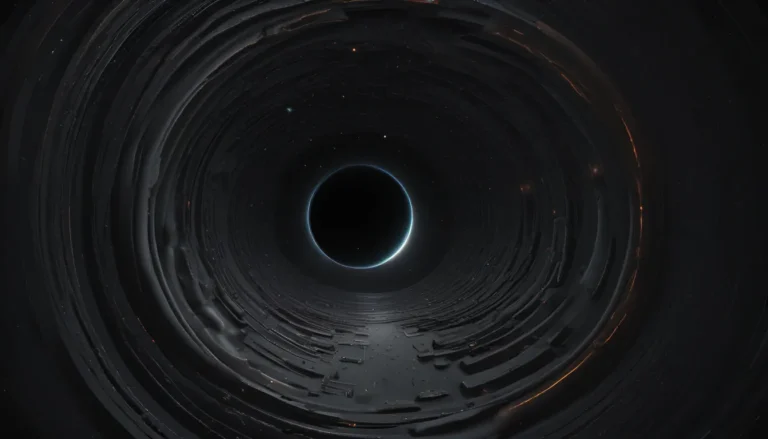The pictures we use in our articles might not show exactly what the words say. We choose these pictures to make you interested in reading more. The pictures work together with the words but don’t take their place. The words still tell you the important facts.
When we gaze up at the night sky, our thoughts often drift to the twinkling stars, vast galaxies, and enigmatic black holes that populate the universe. However, there is a hidden spectrum of cosmic phenomena that eludes our naked eyes – X-rays. These high-energy electromagnetic waves offer a unique window into the cosmic realm, shedding light on celestial objects and events that intrigue and astound.
In this article, we invite you to journey with us as we uncover 15 captivating facts about cosmic X-rays that will expand your understanding of the vastness and complexity of the universe. From the origins of X-ray sources to the technological marvels that capture these elusive waves, prepare to be amazed by the wonders that lie beyond our visible cosmos. So fasten your seatbelt and get ready to explore the mesmerizing world of cosmic X-rays.
Unraveling the Secrets of Cosmic X-rays:
- Cosmic X-rays, produced by energetic events, help scientists study black holes, galaxy clusters, and high-energy particles. They also reveal hidden celestial objects and provide insights into the early Universe.
- Specialized telescopes capture cosmic X-rays, aiding in medical imaging and uncovering the mysteries of stars, interstellar medium, and cosmic background. Cosmic X-rays play a crucial role in understanding the Universe’s high-energy phenomena.
The Origins of Cosmic X-rays:
Cosmic X-rays stem from highly energetic processes in the Universe, emanating from sources like supernovae, black holes, pulsars, and active galactic nuclei. These extreme events release vast amounts of energy, generating X-rays that permeate through space, offering astronomers a unique perspective on the universe's inner workings.
The Nature of Cosmic X-rays:
Characterized by shorter wavelengths and higher energy than visible light, cosmic X-rays range between 0.01 and 10 nanometers in wavelength, surpassing the energy levels of visible light. Their penetrating power enables them to traverse through obstacles that would typically obstruct other forms of radiation, providing unparalleled insights into the cosmos.
Tools of Discovery: X-ray Telescopes:
Traditional optical telescopes are ill-equipped to detect X-ray radiation due to absorption by Earth’s atmosphere. Specialized X-ray telescopes, such as NASA’s Chandra X-ray Observatory, are expressly designed to capture cosmic X-rays, unraveling the mysteries of high-energy phenomena in the universe and opening new vistas of exploration.
Illuminating Black Holes with X-rays:
Black holes, enigmatic cosmic entities, emit X-rays as matter spirals into them or accretes mass from neighboring stars or gas clouds. By analyzing the properties of X-rays emitted by black holes, scientists glean insights into their mass, spin, and activity, peering into the cosmic abyss with unprecedented clarity.
Probing the Universe’s Building Blocks: Galaxy Clusters:
The interaction between hot gas and dark matter within galaxy clusters generates X-rays, unveiling insights into the formation and evolution of these colossal cosmic structures. By studying these X-ray emissions, scientists unravel the intricate tapestry of galaxy clusters, shedding light on the universe's grand design.
Decoding Stellar Evolution with X-rays:
The distinctive X-ray spectra emitted by varying elements enable scientists to dissect the composition of stars and supernova remnants. This information serves as a key to unraveling the processes of stellar birth, evolution, and demise, illuminating the complex life cycle of celestial bodies.
Bridging Science and Medicine:
Medical imaging owes its foundation to cosmic X-rays, as the principles underpinning X-ray observations in astrophysics form the basis of medical X-ray imaging. By utilizing X-rays to visualize the human body, physicians diagnose ailments and devise tailored treatment strategies, harnessing the power of cosmic phenomena for healthcare.
Balancing Discovery and Caution:
While cosmic X-rays are instrumental in advancing scientific research, excessive exposure poses risks to living organisms, damaging cells and DNA. Precise precautions, including shielding measures during medical procedures or space exploration missions, are imperative to ensure safety and foster responsible exploration.
Illuminating the High-energy Frontier:
The study of cosmic X-rays illuminates the origins and behaviors of high-energy particles, such as cosmic rays and neutrinos, providing critical insights into the extreme processes at play in the universe. These enigmatic particles carry invaluable information, unraveling the mysteries of cosmic phenomena.
Revealing Hidden Celestial Beings:
X-ray emissions unveil obscured or concealed celestial objects, ranging from dusty regions to dense interstellar clouds. By peering into the X-ray spectrum, astronomers unveil cosmic phenomena that elude detection in other wavelengths, offering a fresh perspective on the universe's hidden treasures.
Pioneering Spacecraft for Cosmic X-ray Exploration:
Dedicated spacecraft like XMM-Newton and NuSTAR are equipped with specialized X-ray detectors, enabling the capture of high-resolution images and spectra of cosmic X-ray sources. These cutting-edge missions yield invaluable data for further scientific inquiry, propelling exploration to new frontiers.
Unveiling the Temporal and Spatial Dynamics of X-ray Sources:
Certain cosmic X-ray sources, such as X-ray binaries or pulsars, emit X-rays in short bursts, while others like active galactic nuclei perpetually produce X-ray radiation. The unique emission patterns offer insights into the underlying mechanisms fueling these cosmic phenomena, guiding astronomers in deciphering the mysteries of the cosmos.
Time Capsules of Stellar Ages: Star Clusters and X-ray Emissions:
By analyzing the X-ray emissions emanating from star clusters, scientists can estimate their ages. Younger clusters exhibit higher X-ray emissions due to the presence of active and energetic stars, providing a glimpse into the cosmic chronology of stellar evolution.
Illuminating the Interstellar Tapestry:
The interstellar medium, comprising gas and dust between stars, emits X-rays when exposed to shocks or high-energy particles, unveiling the structure, composition, and dynamics of this cosmic fabric. The study of these emissions elucidates the intricate interplay of cosmic forces shaping the interstellar medium.
Gateway to the Cosmic Past: Cosmic X-ray Background:
The collective X-ray emission from all sources throughout the universe, known as the cosmic X-ray background, offers a window into the early epochs of the cosmos. By scrutinizing this cosmic radiation, scientists glean insights into the formation of galaxies, black holes, and the primordial universe, unlocking the secrets of our celestial origins.
These captivating facts about cosmic X-rays underscore their pivotal role in unraveling the enigmatic tapestry of the universe. From deciphering black holes to unveiling hidden celestial spectacles, cosmic X-rays offer a unique portal to the high-energy phenomena that define our cosmic expanse.
In Conclusion:
Cosmic X-rays stand as a testament to the wondrous complexity of the universe, captivating both scientists and stargazers with their profound insights. From their humble origins to their monumental impact on astrophysical discoveries, cosmic X-rays continue to reshape our understanding of the cosmos, propelling us towards new frontiers of exploration and knowledge.
FAQs: Unveiling Cosmic X-rays
-
What are cosmic X-rays?
Cosmic X-rays are high-energy photons emitted by celestial objects, such as black holes, neutron stars, and active galaxies. -
Can X-rays from space reach the Earth's surface?
No, X-rays cannot penetrate Earth's atmosphere and reach the surface due to absorption and scattering interactions. -
How are cosmic X-rays produced?
Cosmic X-rays are generated by high-energy processes in space, such as matter accretion onto black holes or particle interactions in supernova remnants. -
How do scientists detect cosmic X-rays?
Scientists employ specialized instruments on space-based observatories, like the Chandra X-ray Observatory and XMM-Newton Observatory, to detect and analyze cosmic X-rays. -
What insights can we gain from studying cosmic X-rays?
Studying cosmic X-rays offers valuable insights into black hole behavior, galaxy cluster formation, and the properties of X-ray binaries, enhancing our understanding of the universe's fundamental processes and physics.
Embark on a cosmic odyssey, delving into the realm of cosmic X-rays, where mysteries await unraveling and discoveries beckon exploration. Explore the universe's hidden tapestry, guided by the radiant glow of cosmic X-rays, and witness the boundless wonders that lie beyond our terrestrial horizons.






